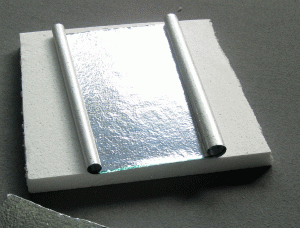How is wood burning different in a masonry heater than in a regular wood stove?
A masonry heater is designed to burn a large charge (amount) of wood in a short amount of time at extremely high temperatures, upwards of 1800 degrees F. The heat from the combustion process is stored in the mass of the stove. In order to effectively store heat, masonry heaters are quite heavy and weigh thousands of pounds. Because the heater is designed to be fired as hot as possible, it will consume a day’s worth of wood in a matter of a few hours, at which point the chimney and air intake are closed off. Once a burn is completed, the heater will radiate its stored heat for a period of 24 hours or longer at very comfortable and even temperatures.
Although masonry heaters have been common in Europe for hundreds of years, they have only begun to enter the spotlight in the US within the last 20 years. They are gaining in popularity for several reasons. The high combustion temperatures produce extremely clean burns with virtually no creosote buildup in the flue passages, which translates into some of the lowest particulate emissions attainable through wood burning. Since the heater will extract the most heat energy it can from a piece of wood, it uses less wood overall, important where firewood is a limited resource.
It should be noted that a masonry heater is a long-term investment and may command a price easily several times that of a top-of-the-line wood stove. The brick core of a masonry heater is carefully engineered for performance and it takes a skilled mason to construct the heater to insure that it drafts properly and can withstand the expansion and contraction of thousands of firing cycles. Since the heater is so large, the best time to install one is during the construction of the house, where it can more readily be incorporated into the home’s design and heating requirements. The good side to this is that a masonry heater can easily last a lifetime, or even several life times.
One of the best resources for more detailed information regarding masonry heaters is The Masonry Heater Association of North America www.mha-net.org. For local viewing, the Cold Climate Housing Research Center has a 12,000 pound heater in center of its lobby which heats roughly 3200 square feet of office space. The heater is fired Monday through Friday during the winter season, typically in the mornings, and burn times last around four hours.
